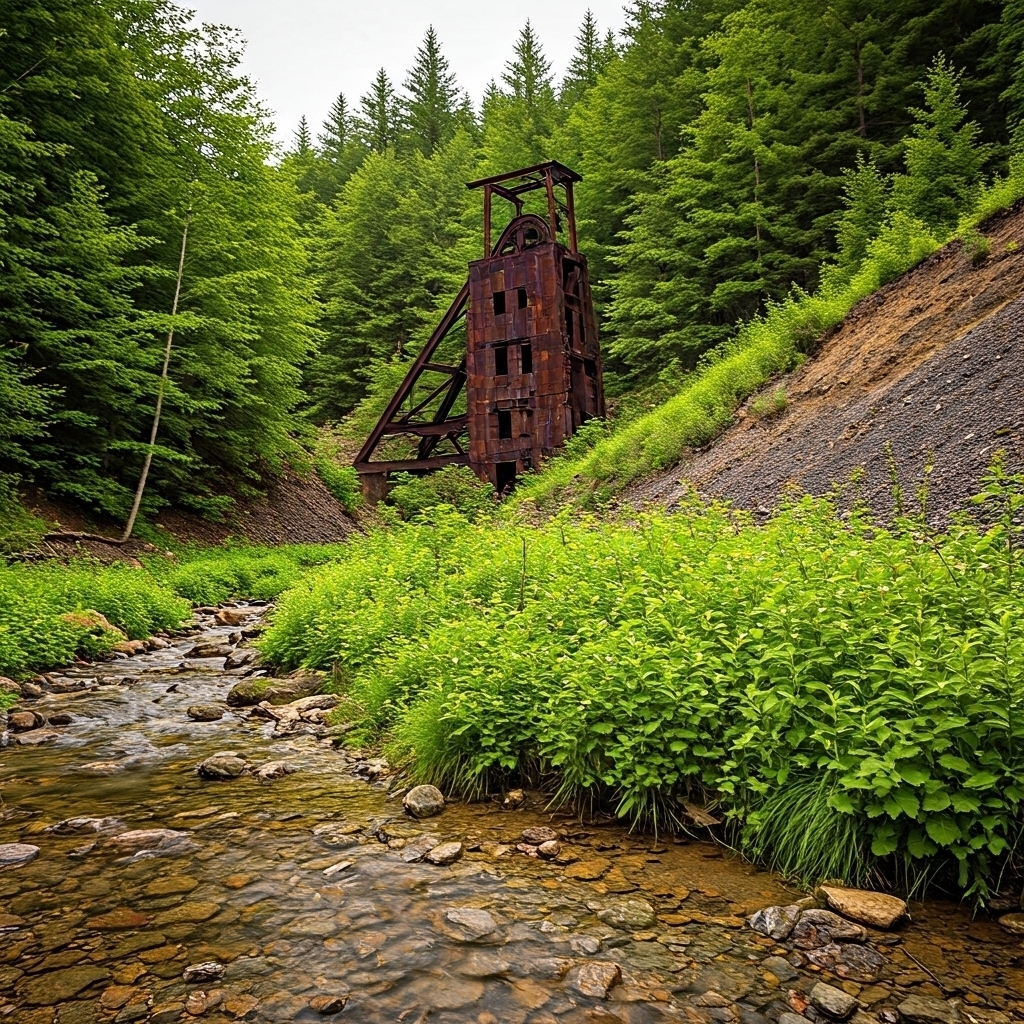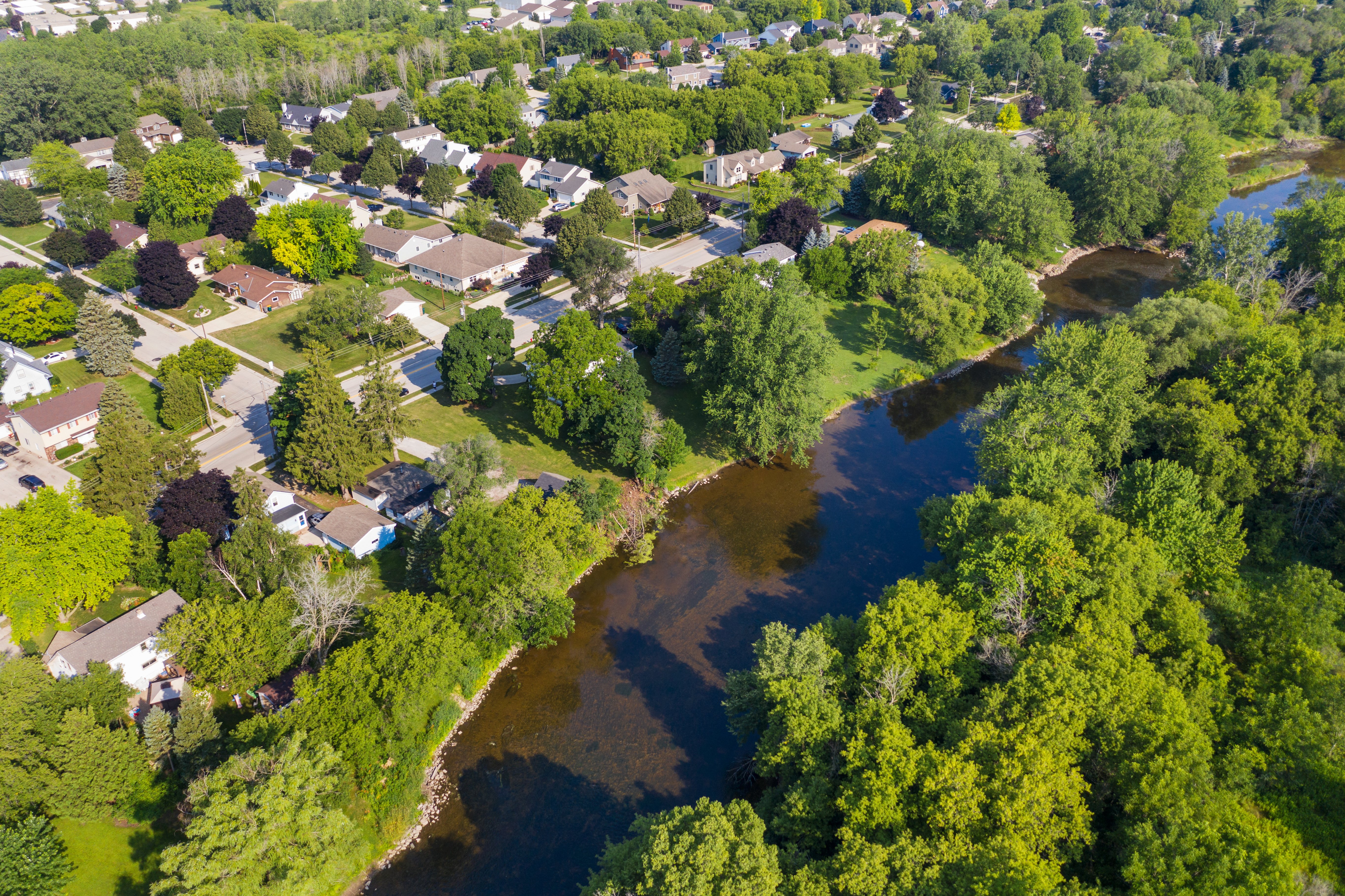Choosing the right tree just got easier: An interview with a RES Arborist
It’s a common challenge: you want to plant the right tree, in the right place, but how do you choose? A newly updated online tool, originally developed by the University of Florida and now enhanced with input from RES arborist Larsen McBride, is helping users do just that.
Designed with accessibility in mind, this tree selector guides homeowners, landscapers, and even restoration professionals through smart, site-specific tree choices, avoiding common pitfalls like invasive species or poor planting conditions.
We sat down with Larsen for a quick conversation about the tool’s origins, how it works, and how RES’s expertise helped shape it into a resource anyone can use.
Q&A with Larsen McBride, RES Arborist
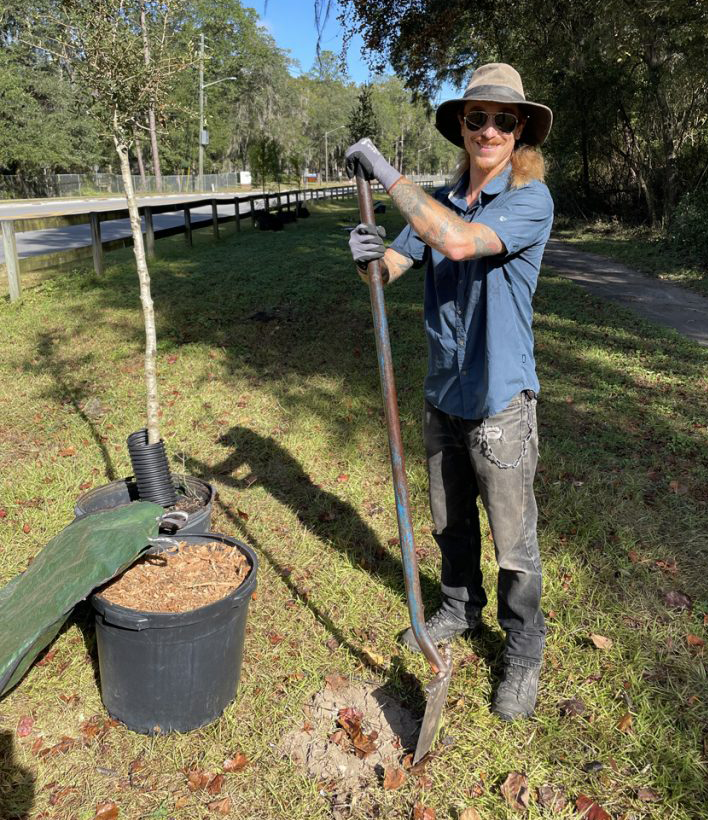
Larsen McBride, RES Arborist, participating in a volunteer tree planting event in Alachua County, Florida.
Q: How did this tree selection website come about?
Larsen: Dr. Ed Gilman at the University of Florida created the original version decades ago. It had become outdated, so Dr. Ryan Klein, who now holds that arboriculture role at UF, led the charge to modernize it. I worked with him to write a tutorial that would make it more user-friendly and practical for everyday people.
Q: Who is the tool designed for?
Larsen: It’s primarily for the public, homeowners who want to make good decisions about what to plant and where. But we also knew that by making it simple and accessible, we’d help landscape companies too, especially those run by folks with lots of field experience but little formal training. The tool helps bridge that gap between science and practice.
Click here to visit the Florida Tree Selector Tool
The Florida Trees website, developed by UF/IFAS, helps users select the right tree for the right place using powerful tools for site analysis, tree search, and species identification.
Q: What kinds of mistakes does the tool help people avoid?
Larsen: A big one is putting the right tree in the wrong place. You might choose a native species like Eastern red cedar, but if you plant it in soggy soil, it won’t thrive. The tool helps you match tree species to actual site conditions, like sun exposure, soil type, and moisture level, so you’re setting yourself up for long-term success.
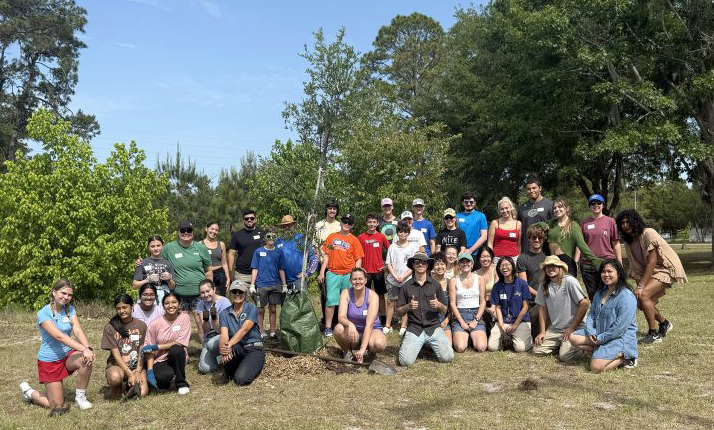
Alachua County Earth Day tree planting event, 2025.
Q: How does this reflect RES’s technical strengths?
Larsen: While RES doesn’t typically design urban landscapes, we often advise on planting strategies as part of our restoration work. This tool gives us, and our clients, an evidence-based, user-friendly resource for making better planting decisions. It’s also a great example of the kind of support we get at RES to pursue things we feel passionate about in support of the environment.
Q: What’s one tree you wish people used more in Florida?
Larsen: Bluff oak. It’s native to Florida’s limestone bluffs and adapts incredibly well to urban conditions, alkaline soils, compacted ground, and limited root space. It won't tear up sidewalks because it sends roots down instead of out. It’s underused and deserves more attention.
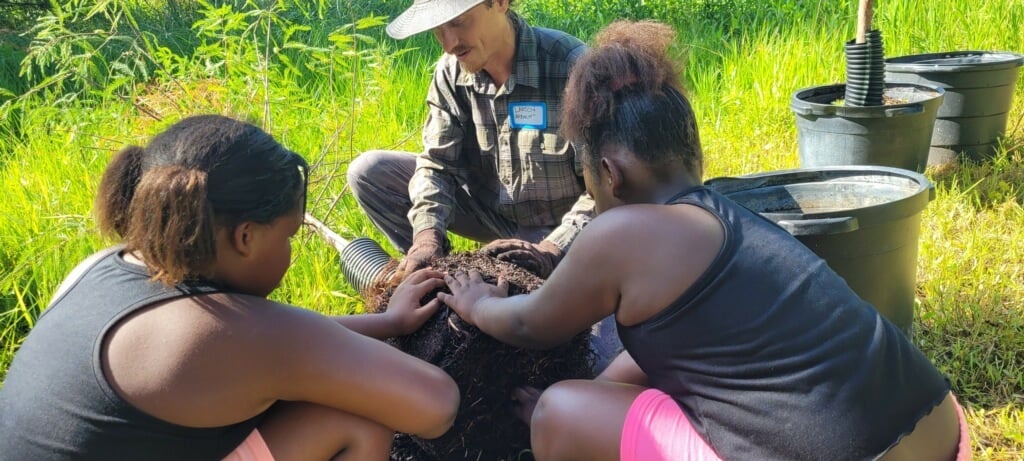
Larsen teaching kindergarten and 1st grade campers about tree roots and wetlands at Cuscowilla Summer Camp in Micanopy, Florida.
Ready to explore? Try the tool for yourself and see how easy it is to choose the right tree for your site: Visit the Florida Tree Selector Tool
Have questions or want expert input? Contact RES arborist Larsen McBride or Landscape Inspector Kyra Paris.
Our team is happy to help you develop resilient, nature-based planting strategies.
- Videos (45)
- Environmental Mitigation (43)
- Natural Resource Restoration (33)
- Landscape-scale Restoration (30)
- Species & Habitats (28)
- Water Quality (17)
- articles (17)
- California (16)
- Resiliency (15)
- Texas (15)
- Virginia (13)
- Pennsylvania (12)
- Regulatory (11)
- Technology & Innovation (11)
- Oregon (10)
- Klamath (9)
- Procurement (8)
- Research (8)
- Water Quantity (8)
- Case Studies (7)
- Studies & Reports (7)
- Case Study (6)
- Louisiana (6)
- Presentations (5)
- Storymap (5)
- Florida (4)
- Maryland (3)
- Urban Renewal (3)
- Video (3)
- Flooding (2)
- Illinois (2)
- Milwaukee (2)
- North Carolina (2)
- Restoration (2)
- Tennessee (2)
- Webinar (2)
- Wisconsin (2)
- Bois Darc (1)
- Carpentersville Dam (1)
- Corporate Sustainability (1)
- Dam Removal (1)
- Environmental Restoration (1)
- Erin Delawalla (1)
- Justin Freedman (1)
- Mine Reclamation (1)
- Ohio (1)
- Podcast (1)
- Podcasts Audio (1)
- South Carolina (1)
- Suburban Chicago (1)
- Trees Planting (1)
- West Virginia (1)
- indiana (1)




